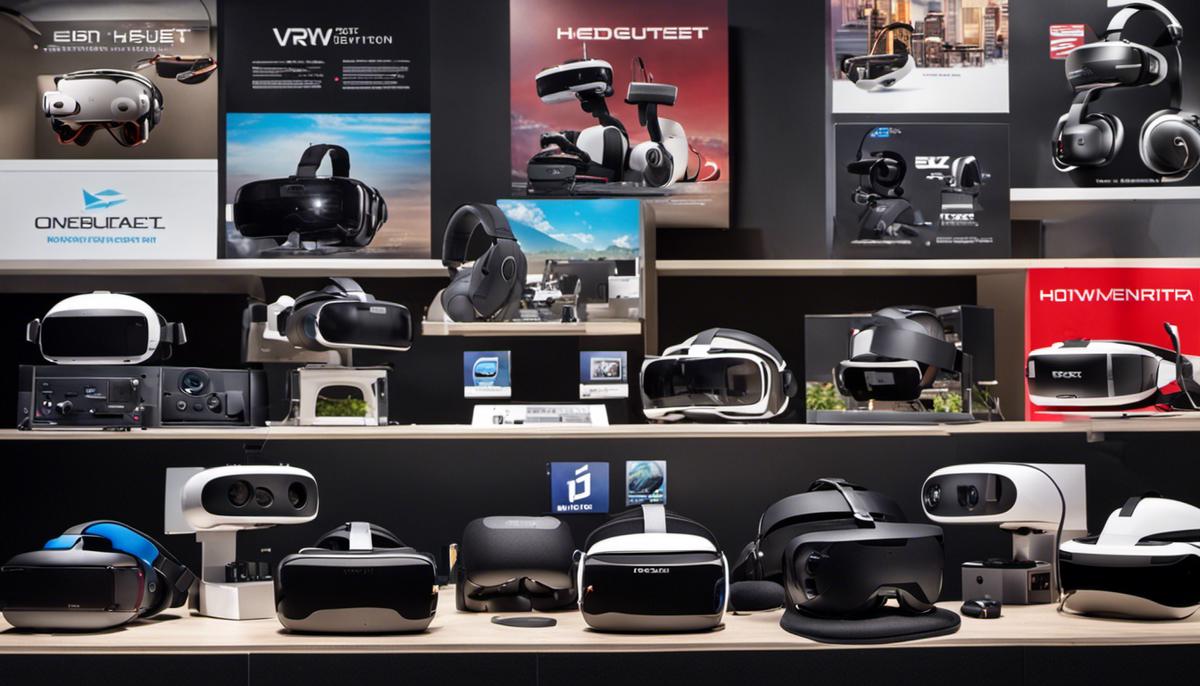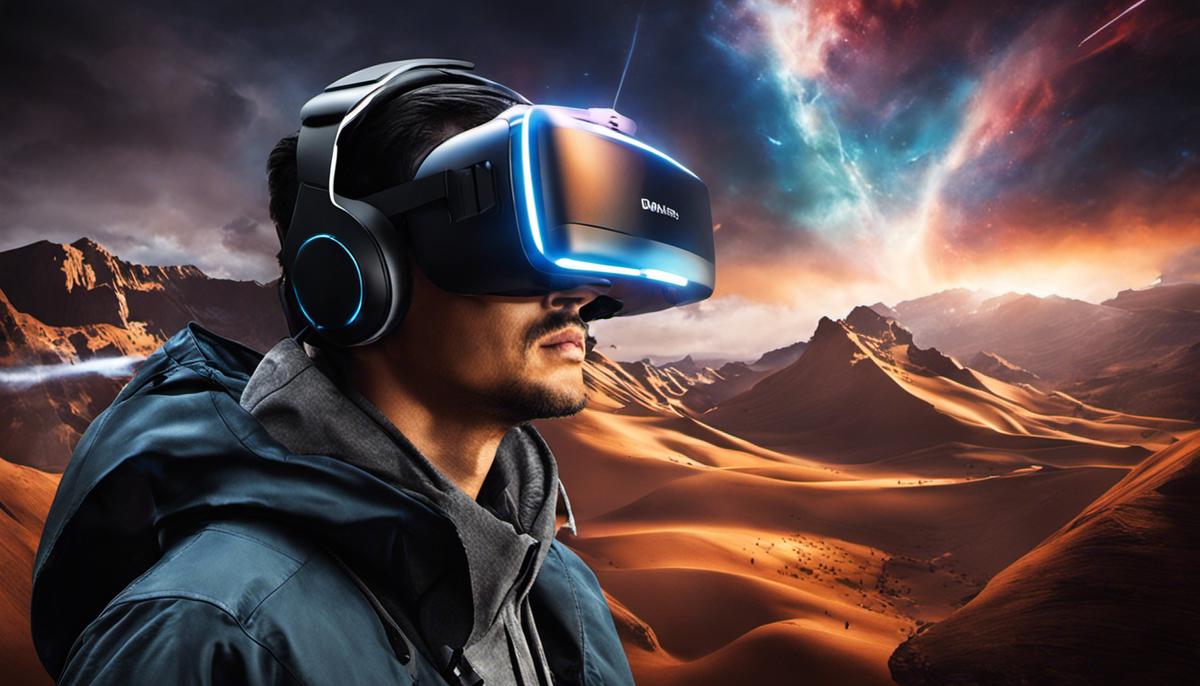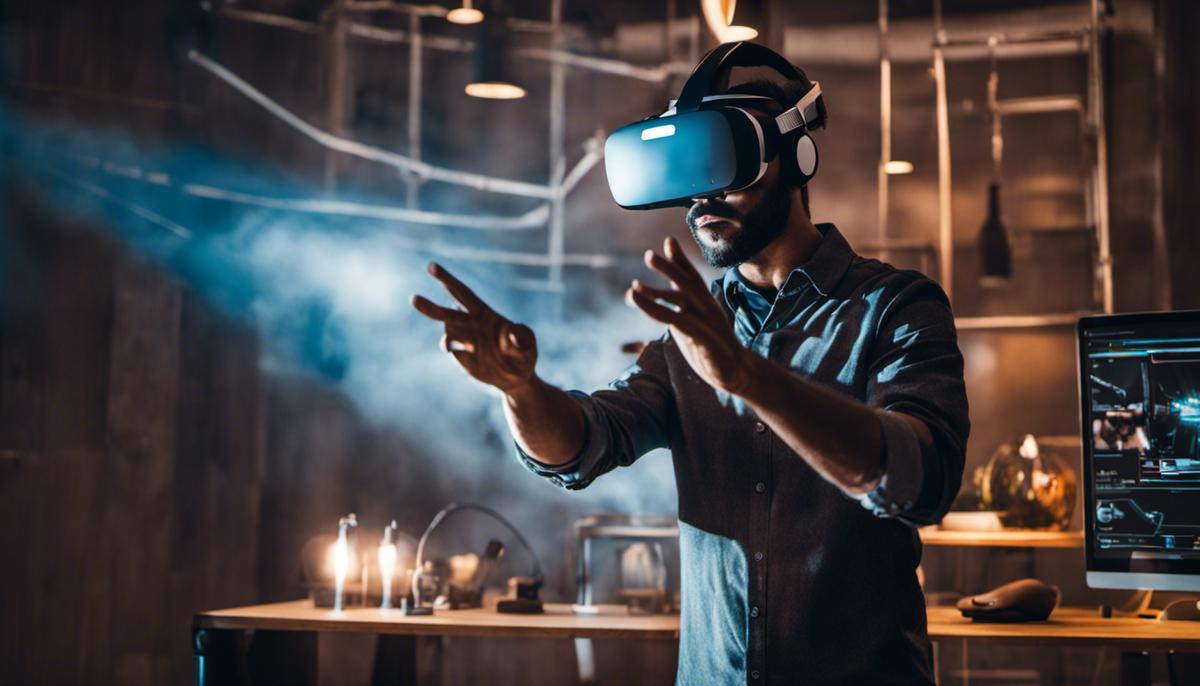Exploring Trends in Virtual Reality

Stepping into the complex and ever-evolving domain of Virtual Reality (VR), we dive deep into an ocean of boundless potential. Currently, VR technologies are experiencing groundbreaking innovations, enhancing the immersive experience and offering users limitless possibilities within the VR space. Moreover, it is becoming increasingly vital across a diverse range of industries, including gaming, real estate, healthcare, and education, pioneering efficiency and user experience. As we unravel the possibilities within this digital universe, we simultaneously peer into the future – a realm imbued with forecasts by industry experts and brimming with new technological advancements, applications, and implications.
Current VR Technology Innovations
The Evolution of VR Hardware
Innovations in Virtual Reality (VR) hardware are on a steady rise, with many developments focusing on improving user experience as well as finding ways to create a more immersive experience. Enhanced headsets are among the key advancements, with brands like Oculus and PlayStation unveiling models that offer high-definition visuals, comfortable designs, and improved user interfaces. The Oculus Quest 2, for example, offers a resolution of 1832 x 1920 pixels per eye, bringing users one step closer to a truly lifelike VR experience.
VR controllers have also seen substantial improvements. The Valve Index Controllers have introduced finger recognition capabilities, allowing users to manipulate the VR environment with an unprecedented level of detail and precision. Meanwhile, gesture recognition technology is another growing trend. Companies like Ultraleap are using hand-tracking and haptic feedback technologies to allow users to interact naturally with the VR environment without the need for any handheld devices.
Software Advancements in VR
On the software side, developments are following a similar trajectory, with an emphasis on creating more realistic and detailed virtual environments. Graphic rendering has seen marked improvements, enhancing the visual appearance of VR experiences. Platforms like Unity and Unreal Engine are offering increasingly advanced tools to developers, allowing them to create more immersive and visually stunning worlds.
AI and machine learning algorithms also play an increasingly substantial role in VR software advancements. Through machine learning, VR environments can adapt to users’ actions and decisions, generating interactive and dynamic experiences. AI is not only used to improve the interaction of the user with the environment, but also for creating intelligent and responsive characters within the VR world.
Another big trend in VR software is the development of social and collaborative VR experiences. Platforms like VRChat, Rec Room, and Facebook Horizon are focusing on creating shared VR spaces where users can interact in real time, joining together for social experiences, collaborative work, or multiplayer gaming all within a virtual world.
VR applications: Beyond Gaming
While initially VR was mostly tied to gaming, its uses are now spanning a host of other sectors. Education is one sector that has embraced VR, using it as a tool for immersive learning which can aid in enriching the learning experience and improve retention of information. Whether it’s a virtual field trip, a detailed walkthrough of the human anatomy, or a historical reenactment, VR is transforming the classroom experience.
In healthcare, VR is being used for various applications, from therapy and pain management to surgical training and patient education. It offers a safe and controlled environment for health professionals to gain hands-on experience and for patients to understand their conditions more clearly.
VR technology is also seeing increased use in architecture. Architects and engineers are using VR to visualize and interact with their designs before they’re built, allowing them to identify problems early and reduce costs.
Virtual Reality (VR) is paving new paths in various sectors, including gaming, corporate training, healthcare, and real estate. The advancements in VR hardware and software are crafting intricate, use-case specific applications, set to redefine the VR landscape in the near future.

Influence of VR in Different Industries
Trends in VR Gaming Universe
Amongst the sectors utilizing VR advancements, the gaming industry offers a fascinating blueprint of innovation. The technology is enhancing the gaming space by introducing more immersive and interactive experiences. Titles like Resident Evil 7, Pokémon Go, and Beat Saber have effectively capitalized on VR’s capabilities, offering gamers a blend of 360-degree visuals and haptic feedback experiences that merge the line between virtuality and reality. Leading tech giants such as Sony and Facebook are investing significantly in this realm, producing state-of-the-art VR gaming hardware like the PlayStation VR and Oculus Rift.
The Influence of VR on Real Estate
The real estate industry has seen a significant transformation with the advent of VR technology. Virtual tours provide potential buyers with a realistic, 3D view of properties, saving time and resources involved in physical property visits. These digital walkthroughs extend to architectural designs and construction phases, providing a holistic preview to buyers. Real estate agencies like Sotheby’s and Redfin are already integrating VR into their marketing strategies to enhance customer experience and engagement.
Utilization of VR in Education
In education, VR is poised to revolutionize the classroom environment. By offering immersive educational experiences through virtual field trips and interactive lessons, students can learn in a more engaging and practical way. It provides a platform to simulate complex concepts that are difficult to visualize in a traditional classroom. Institutions such as Stanford University and Georgia Tech are experimenting with VR for research and teaching, potentially increasing information retention and engagement levels among students.
The Role of VR in Healthcare
Virtual reality technology greatly contributes to the advancements in healthcare. It’s used for medical and surgical training, allowing professionals to practice procedures in a risk-free, virtual environment. Additionally, it aids in patient treatment and rehabilitation, particularly in mental health treatments, pain management, and physical therapy. Some health institutions even utilize VR in stress-reducing activities like therapeutic relaxation and meditation. Major players in the healthcare industry, such as Johnson & Johnson Institute and the Mayo Clinic, employ VR for surgical training, patient therapy, and to provide a visual understanding of complex surgical procedures.
Virtual Reality: Powering Growth across Industries
Virtual Reality (VR), a potent tool with transformative potential, is paving the way for growth within a range of sectors. Its versatile applications in remote working environments, event hosting, artistic creation, and retail illustrate its capacity to enrich user experiences on numerous fronts. Increased investment in VR research and development by tech behemoths, enterprising startups, and large-scale businesses indicates an acceleration of VR integration across industries. Such integration is projected to spur further growth and innovation in the years ahead.

Future Predictions and Implications
Explore the Potential of Virtual Reality
Considered one of the most groundbreaking technological developments of the 21st century, VR is reshaping numerous domains, including entertainment and education. This immersive technology allows users to engage with a virtual environment, adding a distinct layer to digital interactions. With a forecasted market value set to reach a staggering US$208.6 billion by 2022, as per Statista, VR continues to fuel anticipation among tech aficionados, industry frontrunners, and everyday consumers.
Views of Experts on the Future of VR
The future of VR is predicted to be groundbreaking and transformative. Mark Zuckerberg, Facebook’s CEO, envisions VR as having the potential to become the most social platform. Tech giants like Google and Microsoft also anticipate significant changes in the VR space, projecting ubiquitous utilization of this technology in various areas such as social networking, gaming, and remote work. Experts predict that as the technology becomes more affordable and user-friendly, VR will become mainstream, transforming the way people work, play, and communicate.
Technological Advancements in VR
Technological advancements in VR aim to make the user’s experience more immersive and realistic. One of the most notable advancements is the development of haptic feedback technology, which intends to simulate touch sensations, allowing users to feel virtual objects. Another significant advancement is the use of eye-tracking software to enhance the perception of depth and enable more intuitive and realistic interactions. Moreover, wireless and standalone VR headsets are being developed to allow users more freedom of movement, making VR experiences more accessible and enjoyable.
Potential New Applications of VR
The range of potential applications of VR is broad and continues to expand. In the medical field, VR has promising prospects including, virtual surgery simulations, psychological therapy like exposure therapy for PTSD, and physical therapy for stroke victims. In education, VR can help students visualize complex concepts, providing an engaging, immersive, and effective learning environment. The retail industry also seeks to benefit from VR, allowing customers to try products virtually before they buy.
Implications for Businesses and Consumers
For businesses, VR offers vast opportunities. Companies can use VR for training purposes, providing employees with a safe and controlled environment to develop their skills. Virtual tours and product demonstrations can also enhance customer service and engagement. In advertising, companies can create immersive advertisements that offer unique, memorable experiences, potentially leading to increased brand awareness and sales.
For consumers, VR can provide enhanced entertainment experiences, such as immersive gaming and virtual tours. Moreover, VR could potentially change the way consumers shop and learn, offering interactive and exciting new possibilities. Yet, there are also potential challenges, including health concerns related to prolonged VR use and privacy issues that need to be addressed as the technology continues to evolve.

As we embark on this journey to unpack the power of VR, we find it cradled in our present as well as shaping our future. The tech breakthroughs are amplifying the VR experience, taking it beyond games and exploring overlooked territories like healthcare, real estate, and education that engage with our everyday lives. Beyond the present-day applications of VR, we see a horizon teeming with innovative possibilities, potential advancements, and a diversity of applications that VR could bring. As we navigate this intriguing technological mystery, we are not merely watching an evolutionary process; we are witnessing the creation of entire new worlds, that will change the way we interact with the digital realm, forever.
Writio: The AI Content Writer for publishers and blogs. This article was authored by Writio.



